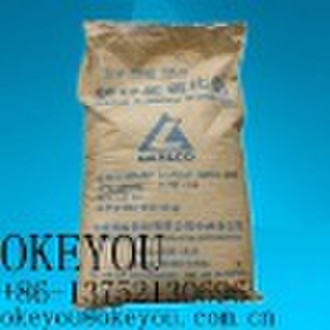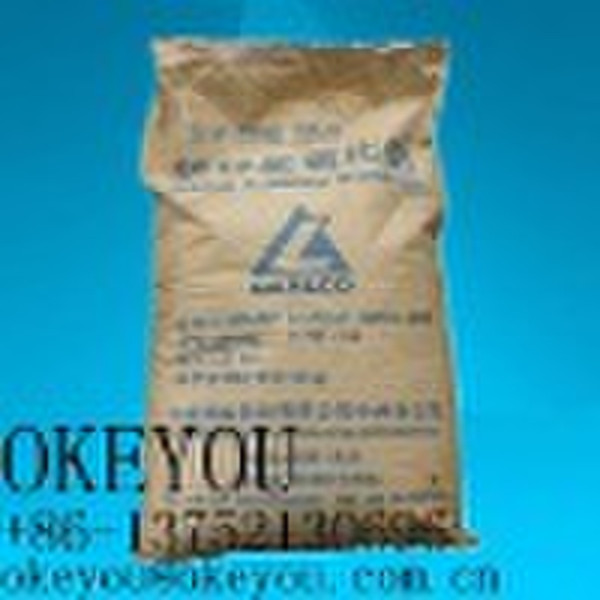Aluminum hydroxide(Glass making,water treatment ag
原价: 1,00 USD
天津市, 中国

Sara Lee
联系人姓名
基本信息
| 适用 | flame retardant |
|---|---|
| 出生地 | Shandong China (Mainland) |
| 牌子的名字 | CHALCO |
| 模式的数量 | AH-1 |
Aluminium hydroxide, Al(OH)3, ATH, sometimes erroneously called Hydrate of alumina, is found in nature as the mineral gibbsite (also known as hydrargillite) and its three, much more rare forms, polymorphs: bayerite, doyleite and nordstrandite. Closely related are aluminium oxide hydroxide, AlO(OH), and aluminium oxide, Al2O3, differing only by loss of water. These compounds together are the major components of the aluminium ore bauxite. Freshly precipitated aluminium hydroxide forms gels, which is the basis for application of aluminium salts as flocculants in water purification. This gel crystallizes with time. Aluminium hydroxide gels can be dehydrated (e.g., with the utility of water-miscible non-aqueous solvents like ethanol) to form an amorphous aluminium hydroxide powder, which is readily soluble in acids. Aluminium hydroxide powder which has been heated to an elevated temperature under carefully controlled conditions is known as activated alumina and is used as a desiccant, an adsorbent, in gas purification, as a Claus catalyst support, water purification, and an adsorbent for the catalyst during the manufacture of polyethylene by the Sclairtech process. Chemistry Gibbsite has a typical metal hydroxide structure with hydrogen bonds. It is built up of double layers of hydroxyl groups with aluminium ions occupying two-thirds of the octahedral holes between the two layers Aluminium hydroxide is amphoteric. It dissolves in acid, forming Al(H2O)63+ (hexaaquaaluminate) or its hydrolysis products. It also dissolves in strong alkali, forming Al(OH)4- (tetrahydroxoaluminate). [edit] Production
交货条款及包装
Packaging Detail: 25kg/bag;40KG/BAG. Delivery Detail: within 5 days
端口: tianjin
付款条款
Telegraphic transfer
Western Union
-
支付方式
我们接受:









